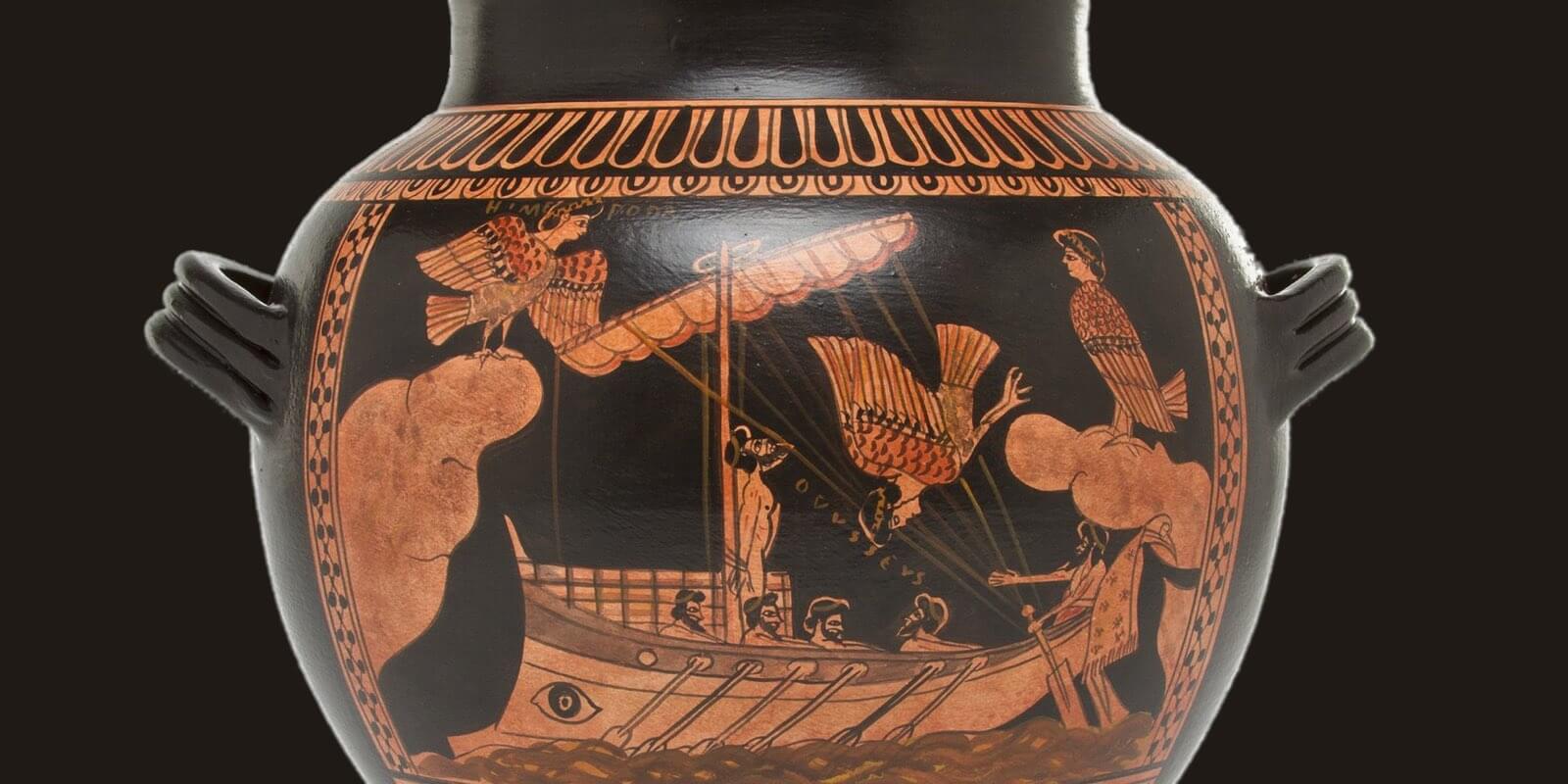Few things in life are as terrifying as a full-blown panic attack.
I’ve only had a panic attack once and it was truly awful:
I jolted awake in bed, my shirt was drenched in sweat, my heart was beating out of my chest, and I just couldn’t seem to get a full breath. It felt like there was an anvil crushing my chest. I thought for sure I was going to die.
Ask any emergency room nurse or doctor and they’ll tell you they routinely see people in the hospital who are convinced that they’re having a heart attack and are about to die. But in reality, they’re perfectly healthy. They’ve simply had a panic attack.
I use the word simply on purpose. Because while panic is quite scary, it’s also a completely harmless and has a pretty straightforward fix.
As a professional psychologist and cognitive behavioral therpist, I treat people with anxiety and panic every day. And as terrible as it is to suffer from panic attacks, you should know this:
Once you understand what panic really is and how it works, it’s possible to completely free yourself from it.
In this guide, we’ll walk through how to understand what a panic attack really is, and then how to use that knowledge to never have another panic attack again.
Here’s what we’ll cover (you can use the links to jump straight to a specific section if you want):
- What is a panic attack?
- How dangerous are panic attacks?
- The 4 most common misconceptions about panic attacks
- What causes panic attacks in the first place?
- Why panic attacks keep happening
- 3 practical strategies for avoiding panic in the first place
- Resources and professional help for panic attacks
Okay, let’s dive in!
What is a panic attack?
Here’s the simplest and most accurate definition of panic I know:
Panic is anxiety about anxiety.
Just like we can have anxiety about spiders (arachnophobia), anxiety about crowds (agoraphobia), and anxiety about traumatic experiences (PTSD), we can also have anxiety about having more anxiety. This is what happens when we have a panic attack or suffer from panic disorder.
To be a little more specific, panic happens when we catastrophize the physical symptoms associated with anxiety:
- My heart feels funny… Am I having a heart attack?
- I feel like I can’t get a full breath of air… What if I can’t breathe?
- I feel so lightheaded… Oh no, I’m going to pass out.
Unfortunately, these catastrophic interpretations of how we feel only lead to more anxiety symptoms, more catastrophizing, and pretty quickly, a full-blown panic attack.
We’ll talk in more detail about this process and how panic develops later on. But first, let’s address the most pressing concern that most folks with panic have…
How dangerous are panic attacks?
Many of us are familiar with the most common physical symptoms of anxiety:
- Increased heart rate
- Shallow breathing
- Butterflies or knots in our stomach
- Dizziness or lightheadedness
- Sweating and increased body temperature
- Sometimes even numbness in our fingers, toes, or face.
- And of course, intense fear that we’re going to die or go crazy
The key thing to know about these symptoms of anxiety is that they’re not really symptoms at all.
A symptom is an abnormal physical manifestation of a disease state. In other words, it’s a sign from your body that something’s wrong and needs to be fixed.
But all those uncomfortable physical feelings we get when we’re anxious… They’re actually normal effects of your body operating properly.
Specifically, they are a fight or flight response triggered by our brain releasing adrenaline because it thinks there’s a danger that needs to be dealt with.
A panic attacks happens when our brain thinks our own anxiety is dangerous.
But here’s the thing: No matter how uncomfortable the feelings associated with anxiety are, they are a normal reaction and are not dangerous. No one dies from panic. In fact, panic can’t hurt you at all.
4 common fears about panic attacks (and why you don’t need to worry about them)
Here are several of the most common fears about having a panic attack, along with an explanation of why you don’t actually need to worry about them:
- My heart’s racing and I’m going to have a heart attack. It’s true that when your brain releases adrenaline it causes your heart rate and blood pressure to rise. But it’s not to a level that’s dangerous. Even in the most severe panic attacks, your heart rate looks very much like it does under moderate exercise. Don’t beleive me? Buy a cheap heart rate monitor and check for yourself.
- My breathing’s too shallow. I feel like I can’t get enough air. While your respiratory rate does increases during a panic attack, you aren’t ever at risk of not getting enough oxygen. Your airways don’t actually change in size during panic attacks. The way you get it has just changed (fast and short breaths rather than slow long ones).
- I feel so lightheaded. I’m going to pass out. Passing out or feinting is nearly always caused by a decrease in blood pressure. But when you’re in the middle of a panic attack, your blood pressure is elevated. The vast majority of people are actually less likely to pass out during panic than when they feel normal!
- I’m going to lose touch with reality and go crazy. Anxiety does not cause psychosis, which is the technical term for losing touch with reality. There’s no evidence for this, so rest easy.
Key Take Away: Panic attacks aren’t dangerous. And just because they feel awful doesn’t mean anything’s actually wrong with you.
All the scary and uncomfortable sensations associated with panic are the natural result of your brain releasing adrenaline and putting you into fight or flight mode. And just because your brain mistakenly put you into fight or flight mode doesn’t mean anything bad or dangerous will happen as a result.
The whole point of being in fight or flight is that your body’s trying to prevent anything dangerous from happening.
Evolution wouldn’t have done a very good job if it had evolved a threat response system that was dangerous itself!
But why does our brain mistakenly put us into fight or flight mode?
Great question! As we’ll see below, it’s because we teach it to…
What causes a panic attack?
One of the scariest things about panic attacks is that they seem to come out of nowhere, often with no obvious cause or trigger. The combination of suddenness, intensity, and inexplicability in panic is terrifying.
But it’s a mistake to assume panic attacks are random or completely unpredictable just because we don’t perceive a cause.
We said above that panic is anxiety about anxiety. Which means that—in the abstract—anxiety is the cause of panic.
To better understand this, let’s take a closer look at how panic actually happens and what we mean when we say anxiety about anxiety causes panic.
How panic attacks get started:
To get a better idea for how panic attacks happen, let’s take an example and walk through the process of panic step-by-step:
- Something triggers a mild or moderate anxiety response. As I’m pulling my car out of the parking lot after an hour at the gym, I notice my heart flutter in a weird way and wonder, “Uh oh, what was that!?”
- In response, the brain releases a little adrenaline and activates the fight or flight response. I start to feel anxious emotionally. And on a physical level, I notice that my heart rate has increased. Now that I think about it, my chest also feels a little tight and I’m having a hard time getting a “good” breath of air.
- We worry that something really bad will happen as a result of how we feel. In response to this anxiety and uncomfortable physical sensations, my mind immediately starts asking questions like: What’s wrong with me? This isn’t normal, is it? Did I push things too hard in the gym? What if I damaged my heart? Maybe I’m having a heart attack?
- Because we catastrophize more, our brain releases more adrenaline leading to more physical symptoms of anxiety. Now my breathing is even shallow and faster. It feels like I’m not getting enough air. My head’s starting to feel a little foggy and fuzzy, like dizziness or lightheadedness. My fingertips are starting to feel tingly and even a little numb. My vision seems a little “off,” or maybe the world seems a little strange or unreal.
- We continue worrying and try to make the feelings go away. At this point, I’m really freaked out. All I can think about is something awful happening (I’m going to pass out, crash the car, kill myself, and probably someone else). Every ounce of mental energy I have is geared toward understanding what’s wrong and trying to make it go away. I pull the car over, shut my eyes and try to breathe deeply. This helps a little. I call my buddy who’s a doctor and explain what’s going on. He reassures me that I’m not having a heart attack and that it’s probably “just a panic attack.” I start to feel better. But just to be safe, I call an Uber to take me home instead of driving myself.
Regardless of the details, if you’ve ever had a panic attack, you can probably relate to the above story.
It also helps illustrate a key distinction:
The trigger for panic is different than the cause of panic. Intense exercise triggered an innocuous but uncomfortable heart palpitation. In response to my heart palpitation, I started worrying about it, which caused more “symptoms,” which lead to more worry, which caused even more symptoms.
While virtually anything can trigger anxiety, it’s worrying about our anxiety that causes a panic attack. Specifically, when we catastrophize about a physical symptom of anxiety (regardless of the trigger), we cause more anxiety and eventually panic.
Anything can trigger a panic attack, but worry always causes it.
But why do I keep having panic attacks?
Many people have a single panic attack and then never have another. On the other hand, some people develop Panic Disorder, which means that they have consistent panic attacks along with significant fear of having more panic.
There are two primary causes of chronic, recurring panic attacks:
- Treating a panic attack like a danger. After an initial panic attack, the feeling eventually subsides. But the way we handle that first panic attack often makes future attacks more likely. Specifically, by trying hard to eliminate or avoid our first panic attack, we teach our brain that our own anxiety is dangerous. As a result, our brain gets really good at quickly delivering lots of adrenaline as soon as we feel even the slightest bit of anxiety or any physical sensation associated with anxiety.
- We start to worry about having future panic attacks. We become hypervigilant of certain environments we associate with our panic, which increases our overall level of anxiety. We eventually start to avoid any activities or situations that might cause panic. As a result, we teach our brains to become increasingly nervous and on alert. And when we are confronted with something scary, we’re much more likely to catastrophize—a self-fulfilling prophecy that only makes panic more frequent.
Summing Up: What causes panic attacks, exactly?
If you suffer from chronic panic attacks it’s because you’ve gotten in the habit of worrying about and catastrophizing your own anxiety, especially the physical sensations associated with panic.
This creates a vicious cycle of your brain being increasingly on the lookout for even the smallest sign of anxiety and then responding to it with an increasingly exaggerated fight or flight response.
Because we worry and treat our own fight or flight response as a danger, we teach our brain that to feel anxiety is dangerous.
The only way to undo this mistaken belief about the danger of anxiety and the habit of worrying about it is to show our brains that we’re okay with our own anxiety.
Which means that when anxiety happens, we have to be willing to have it and not try and get rid of it.
If worry about anxiety tells the brain that anxiety is dangerous, then intentionally not worrying about anxiety tells the brain that anxiety is safe. Uncomfortable, for sure, but ultimately, safe. But of course, easier said than done.
In the final part of this guide, we’ll walk through 3 practical strategies for eliminating panic attacks in the first place.
How to stop a panic attack before it begins
If you struggle with frequent panic attacks, following these three steps will retrain your brain away from perceiving anxiety as dangerous—which is the key to curing panic altogether.
STEP 1. Notice Your Panic Triggers.
Now that we know what panic is and how it works, the next step is to outsmart it by getting good at predicting when it will show up.
As we talked about, one of the most terrifying parts of panic is that it seems to come out of nowhere. And while it’s true that panic doesn’t need some big, epic event to happen in order to arise, there’s always something that triggers the process initially.
But it’s often very small and subtle. At least until you get good at knowing what to look for.
Because panic comes from worrying about the physical feelings associated with anxiety, anything that stimulates even a slight bit of one of those feelings can set off the panic chain.
In other words, the trigger for panic is almost always something that causes changes in your body that remind you of anxiety.
Here’s an example:
I’ve often noticed in my therapy practice that my clients’ panic and anxiety seems to be a little worse in the Winter and early Spring. For a long time, I didn’t know what to make of this until one day a client gave me a surprising answer.
She was explaining a recent episode when she got a little anxious but managed to work through it without it developing into a full blown panic attack. When I asked her to walk me through how she was able to do this, she said something really insightful:
I realized that the flu caused some of the same symptoms that I had when I was anxious. I would get an uncomfortable, tight feeling in my stomach… almost like nausea.
As I was starting to worry more and more that this knot in my stomach might be the beginning of a panic attack, it dawned on that it was probably just a leftover symptom of my flu, and maybe it had nothing to do with anxiety.
I thought this was a great example of how all sorts of things can be a trigger for anxiety and panic.
The really important lesson my client taught herself was that when she was sick she would probably have lots of things that would mimic the feelings of anxiety but that these sensations didn’t mean she was having or about to have anxiety.
A list of common triggers of anxiety:
- Exercise. Obviously exercise causes many of the same “symptoms” that we associate with anxiety: rapid heart rate, sweating, increased respiration, etc.
- Any strong emotion. Intense grief, for example, can often lead to physical symptoms similar to those of anxiety, which is why anxiety often seems to “jump” from some other emotion.
- Memories. If an old scary memory gets triggered by, say, a conversation with a family member, that memory can itself trigger a little anxiety.
- Conditioning. If you had your first panic attack at the gym, your mind may have associated panic with that physical location, which may then be able to trigger some anxiety on its own. Just walking by a place you associate with anxiety can be enough to trigger a little anxiety in you.
- Randomness. Sometimes our hearts flutter weirdly for a second for no reason. You’re not sick, you don’t have an underlying heart condition. The body just does weird things from time to time.
Just about anything can trigger sensations that mimic anxiety. But just because something feels like anxiety doesn’t mean that’s really what’s going on. And even if it is, anxiety is by definition an inaccurate response to a perceived but not genuine threat or danger (as opposed to fear).
Bottom Line: Get in the habit of paying attention to and looking for situations, events, things, people, ideas, activities or anything else that trigger physical effects similar to anxiety. Once you start to identify those patterns, you’ll be able to anticipate anxiety coming and not react in a way that makes it worse.
STEP 2. Notice your panic story
Without fail, the single biggest reason anxiety morphs into panic is because of the story we tell ourselves about it.
Let’s say you’re driving down the freeway at rush hour and all of a sudden you notice that your chest feels a little tight. Consequently, you start to feel a little nervous or anxious. Well, the story you start to tell yourself about what that means largely determines whether or not you will have a panic attack.
Here are some examples of stories you might tell yourself in that situation which will lead to more anxiety and possibly a panic attack:
- I’m not getting enough air.
- What if my brain stops getting enough oxygen and I pass out?
- I have to pull over. Something’s wrong.
- Oh no, I’m starting to get a panic attack. Where’s the nearest exit…?
- Why does this always happen when I’m driving?! I should start taking backstreets from now on.
- If I just breathe deeply this will all go away.
What all these stories have in common is that they’re either stating directly or implying indirectly that something is definitely wrong because your chest feels tight. And your brain is listening.
When it “hears” you telling a story that something is definitely wrong, it confirms its initial theory that something might be wrong (which is why it gave you a little adrenaline in the first place which lead to the chest tightness). As a result, it releases more adrenaline to “help” you deal with the dangerous situation.
Of course, there isn’t actually anything dangerous present, which means you are left with the uncomfortable feelings of adrenaline and no use for the beneficial parts of it.
But in order to try and be less uncomfortable (make the feeling go away), you start doing and saying things that continue to confirm the idea that something is wrong, which tells your brain to continue to release more adrenaline. And on and on we go.
All of this boils down to one simple point:
The single most important thing you can do to prevent a panic attack is to avoid thinking too much about your anxiety or what might happen as a result of it.
Avoid telling a story about it all together. It’s tempting to try and tell a less scary story or remind yourself that things will be okay. And while a tiny bit of this is perhaps useful, it’s really easy to slip from helpful storytelling to unhelpful storytelling.
Which is why it’s usually best to work on simply not telling a story at all.
In other words, the secret to avoiding panic is to just stop thinking (and therefore worrying) entirely.
But how do you not think?
STEP 3. Focus on the feeling.
Counterintuitively, the best thing we can do when we feel like we might be having a panic attack is to focus on the feelings of panic.
Of course, we can’t just shut our brain off whenever we feel panic coming on. That really would be dangerous! So how do we stop thinking while remaining conscious and continuing on with our lives (driving, listening to a lecture or meeting, eating dinner, etc.)? The key is mindfulness.
Now, forget everything you think you know or have heard about mindfulness. It’s become such a trendy and overused term that I hesitate to even bring it up. But at it’s most basic, mindfulness simply means being aware without thinking.
I talk a lot more about this in my article No Seriously, What is Mindfulness? but the basic idea is that you can be aware of things and continue to be present in the world without analytically or verbally thinking about things.
Whether we notice it or not, must of us are talking to ourselves constantly. In a sense, we’re narrating our lives as they happen. And most of the time, there’s nothing wrong with this narration. In fact, there are plenty of instances where it’s useful and positive. But panic is not one of them. Because almost any type of storytelling you do about your anxiety is likely to trigger more anxiety.
Mindfulness is the ability to shift out of thinking/storytelling mode and into simple awareness mode. Which is exactly what we need to be able to do when we feel panic coming on. Be aware without stoking the fire by telling ourselves stories about all the terrible things that are going to happen as a consequence.
Now, you don’t have to hire a guru or start waking up at 5:00 am and meditating every morning to be more mindful. All you have to do is practice noticing when you’re in storytelling mode and shift your attention to just noticing or observing what’s going on.
And the best way to do this when you’re feeling anxious is to focus your attention on and just notice how you feel physically:
- Observe how fast your heart is beating but don’t talk about what it means.
- Notice that your breathing is fast and shallow but don’t yell at yourself internally about how you need to slow down and breathe deeply.
- Be aware of how your stomach or head feels without racing to make a plan for how to make the feeling go away.
Simply observe the feeling.
It’s counterintuitive, but I’ve seen this be successful with hundreds of people in my therapy practice who suffered from panic.
The better we get at being aware of our physical feelings without talking to ourselves about what they mean or trying to make them go away, the faster they will go away.
To free ourselves from panic we must be willing to have it.
Summary & Key Takeaways
- Panic is anxiety about anxiety. Panic attacks happen when we get into the habit of worrying excessively (catastrophizing) about our anxiety and the feelings associated with it.
- We naturally worry about our anxiety because it feels dangerous. But it’s essential to understand that no amount of panic or anxiety is physically dangerous or harmful.
- Remember that the trigger for a panic attack can be almost anything, whereas the cause of a panic attack is always the same—worry. When we worry about having a panic attack or what might happen if we do, we train our brain to be afraid of anxiety itself. Which make it more likely that we’ll have panic in the future.
- To free ourselves from panic, we must be willing to have panic. The best way to do this and prove to our brain that we’re not afraid of anxiety is to be aware of our panic triggers, to stop telling catastrophic stories about panic to ourselves, and to focus on the feelings of anxiety.
- Ironically, it’s impossible to try and have a panic attack. Because the more willing we are to have one, the less our brain thinks of anxiety as dangerous. On the other hand, the more we try not to have panic, the more likely it becomes.
Resources and professional help for panic attacks and finding a qualified provider
A collection of helpful resources to find a qualified mental health professional and learn more about anxiety and panic attacks.
Where to find professional help for panic attacks and panic disorder
Please note: This guide is meant to be informational only and should not be considered medical advice. If you struggle with significant anxiety or panic attacks, please contact a qualified medical professional.
Ideally, look for a psychologist or other mental health professional trained in cognitive behavioral therapy, which is the most evidence-based approach to treating panic attacks and panic disorder.
Here are a few good places to begin searching for someone in your area:
- The American Board of Professional Psychology, Behavioral and Cognitive Psychology Division
- The Association for Behavioral and Cognitive Therapy
- The Academy of Cognitive Therapy
- The Anxiety and Depression Association of America
- If none of these work out, ask your primary care physician for a referral to a cognitive behavioral therapist.





8 Comments
Add YoursI have read many articles, watched videos, read books, bought herbs and supplements, etc just to try and make this anxiety stop. I’ve been going through this for around 5 years. I found a link to your page on YouTube today, and I’m so glad I did. Your explanation has been the most comforting to me. I feel like I finally can get past this.
Dr. Claire Weeks calls it second fear. That’s the fear that comes after the initial one. That’s the one that causes agoraphobia and panic disorder. Her books on agoraphobia were life changing. Highly recommended for anyone who wants to be free from panic.
Love her books, I used to take them on vacation to reread “just in case”, they have helped me so incredibly much!
This is so detailed and wonderfully written- thank you for this comprehensive guide! x
I really miss your 100 tweet challenge. As a chronic high functioning & anticipatory anxiety disorder sufferer, your previous daily tweets really helped.
I’d love to know if you have published any resource on high functioning & anticipatory anxiety disorder, particularly the latter.
As I transition to midlife, I start seeing some of my close circle of friends & colleagues passing on; hence, there’s an overwhelming amount of anticipatory anxiety regarding illness outcomes of beloved family members.
Thank you for your great resources.
Thank you so much; this is the best article I’ve ever read to help me. Every scenario seemed so specific to my experiences for weeks, months, even years now.. I’m in tears of relief. This makes so much sense to me. I don’t have to be afraid anymore, and I now have that tools to overcome these feelings.. all thanks to you. I wish I could repay you.
Who is that in the picture? Looks a lot like Michelle Carter ????
Having suffered from panic disorder for over a year – this has been a lightbulb awareness of how to manage the attacks
Thankyou so much for sharing this with us
I do follow you and will continue to do so
Thankyou again